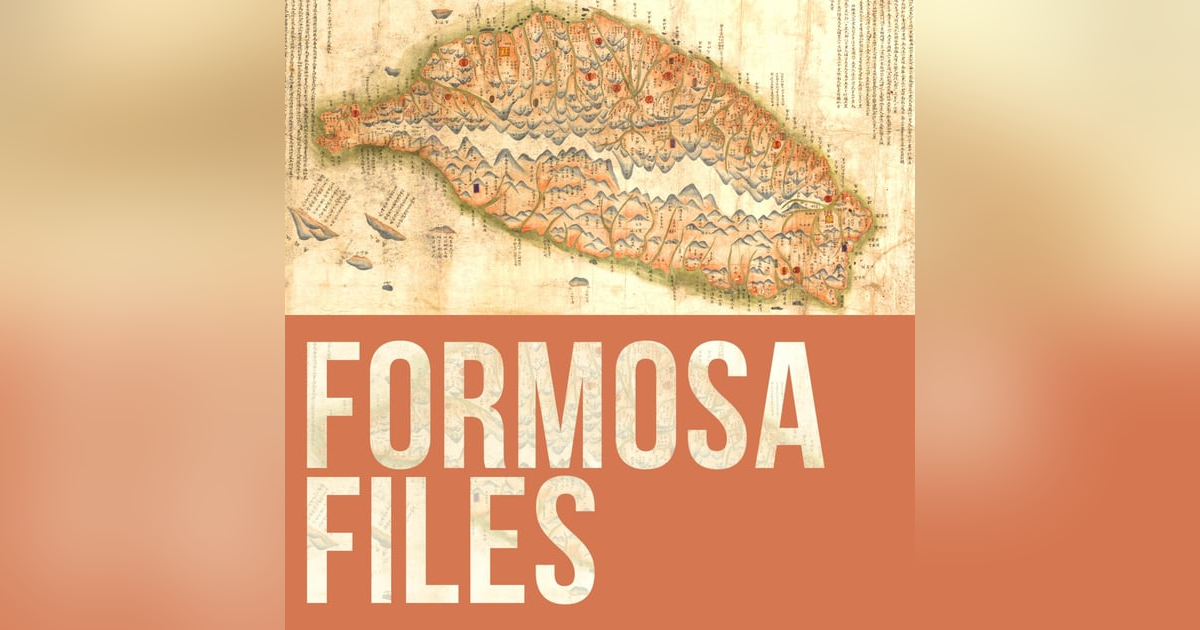[ENCORE] The 4,300-Kilometer Chase of an Illegal Taiwanese Fishing Boat (1989)
![[ENCORE] The 4,300-Kilometer Chase of an Illegal Taiwanese Fishing Boat (1989) [ENCORE] The 4,300-Kilometer Chase of an Illegal Taiwanese Fishing Boat (1989)](https://getpodpage.com/image_transform_gate_v3/QbvNwX8sb5YQ0tN_2jRj8lQzW-UDhx0F7m9cZWFLn0U=/?image_url=https%3A%2F%2Fs3.us-west-1.amazonaws.com%2Fredwood-labs%2Fshowpage%2Fuploads%2Fimages%2F6a2880a9-7a26-4488-9277-bb0863e26a54.jpg&w=1200&h=630&fill=blur)
![[ENCORE] The 4,300-Kilometer Chase of an Illegal Taiwanese Fishing Boat (1989) [ENCORE] The 4,300-Kilometer Chase of an Illegal Taiwanese Fishing Boat (1989)](https://s3.us-west-1.amazonaws.com/redwood-labs/showpage/uploads/images/6a2880a9-7a26-4488-9277-bb0863e26a54.jpg)
Taiwan loves seafood, and boats from this island trawl for yummy ocean offerings thousands of kilometers away from our shores. Taiwanese fishing vessels are very good at what they do, but they weren't always so good in how they did it. The use of drift nets, so-called "walls of death" that entangle species like sea turtles and dolphins, drew international ire. Taiwan boats also did a lot of fishing in waters they weren't supposed to be in. By 1989, the US Coast Guard had had enough and launched a sting operation to catch the violators. They ended up chasing a Taiwan-registered ship for some 2,700 miles (or about 4,300 kilometers). Here's the story:
Note: This episode was originally released on January 9, 2022, under the title E1-S23 - Walls of Death.
Cover: USCGC Jarvis (WHEC-725) was a cutter used by the United States Coast Guard from 1971 to 2013, when she was transferred to the Bangladesh Navy. The Jarvis was one of the cutters used to intercept Taiwanese fishing boats using drift nets, or fishing in restricted waters. Photo via Wikimedia Commons.
Below: The USCGC Morgenthau (WHEC-722), the U.S. Coast Guard ship that chased a Taiwanese vessel for almost 4,300 kilometers. The Morgenthau was in service for 48 years, from 1969-2017, after which it was transferred to Vietnam for use as a patrol craft. Photo shows the Morgenthau off Governors Island in New York Harbor circa 1970. The twin towers of the now-destroyed World Trade Center is seen under construction in the background. Via Wikimedia Commons.
Below: A Wikipedia illustration of drift net fishing. Wiki notes: Drift net fishing became a commercial fishing practice because it is cost effective. Prior to the 1960s commercially produced nets were commonly as long as 50 kilometers, or 31 miles. In 1989 the United Nations General Assembly (UNGA) placed a moratorium on the practice of drift net fishing, and in 1992 the UN banned the use of drift nets longer than 2.5 km long in international waters. Any fish that crosses the path of a drift net in the ocean may be tangled or caught in the net. Non-target individuals caught in the net are called "by-catch." In 1994, a UN agency estimated global by-catch rates to be as high as 27 million tons of fish discarded by fisheries each year.
ARCHIVE ARTICLE SUMMARY VIA The New York Times, June 14, 1989.
"Last week, for the first time, a Coast Guard helicopter was able to videotape a Taiwanese ship, the Ta Chieh 3, dumping tons of illegally caught salmon overboard as a Coast Guard cutter approached.
'The crew of the Ta Chieh 3 tried to bribe our boarding officers with gold, money, alcohol and sexual favors,' said a spokesman for the Coast Guard in Alaska. Taiwanese officials assured the U.S. State Department that they would take over the investigation that could lead to prosecution once the ship is in port at the American base in Midway."
WATCH: Drift Net Issue, by Marguerite Peterseim and the Marine Science Human Impacts Project
------------------------
While Taiwan has made great strides in moving towards responsible fishing practices since the 1990s, unfortunately, there are still some Taiwanese-registered boats that flout international law. The image below is from a 2015 "bust" by the eco-warrior group Greenpeace. Activists say they discovered a falsified log book and almost 100 kilos of shark fins when they boarded the vessel on the high seas in the north west Pacific. The Taiwan Fisheries Agency escorted the Shuen De Ching No 888 back to Taiwan where the ship faced an unknown punishment, such as suspension for a year. However, the details of the case of the Shuen De Ching No 888 case were contested by the Taiwan government’s Fisheries Agency, and the final result currently unclear.
Photos by Paul Hilton/Greenpeace.
Do us a favor and rate/review the show! It really helps. Do it on Apple Podcasts or here on our website.
Write us with questions or ideas at formosafiles@gmail.com
AND THE BIGGEST REQUEST: tell others about this free, not-for-profit resource about Taiwan.



















